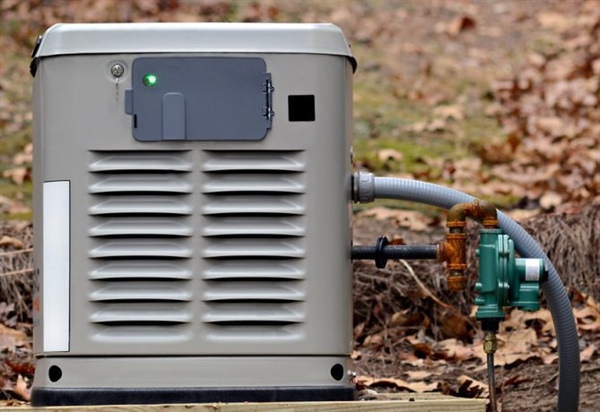Tips for Using a Generator Safely

Emergencies can arise at the worst times. From severe weather to treacherous earthquakes, an unexpected event could have you stuck in your home without power for hours, days, or at worst, weeks.
Installing a backup generator is a proven way to keep some essential electrical and lighting facets in your home functional. However, you should follow some helpful safety guidelines whenever you have to use your generator.
Potential Hazards From Backup Generators
Improper use of a generator may lead to some severe health risks, including:
● Carbon monoxide poisoning
● Electrocution or electrical shock
● Potential Fire
Safety Guidelines
Below are some ways to negate these potential hazards from occurring when using your backup generator:
Proper Grounding
Having your generator properly grounded is necessary for safe use. A grounded generator prevents users from electric shock and potentially fatal electrocution.
Disconnect From Your Normal Power Source
When a local emergency forces your electrical and lighting out, you should disconnect from your regular power source before using your backup generator. Not doing this may send power from your generator back to the utility companies' power lines, posing a severe threat to utility workers trying to fix the issue.
Keep Your Generator Away from Flammable Materials
If you are in a scenario where you're working with flammable materials, they need to be kept at least 10 feet away from the unit. Radiators and exhaust systems are specifically at risk, and if any of the materials come in contact with these components, this can result in a fire or explosion.
Don't Max the Power Out
Generators only have a specific capacity for power, and pushing it past its limit can result in an overload, creating intermittent power surges or damaging the system and devices connected to the unit. The general rule is to have a buffer of around 20% of what you require and leave an excess available to prevent stressing the system.
Plug the Equipment Directly in
If you need to run a laptop or refrigerator or charge your cell phone, plug them directly into the generator. If you need to use an extension cord, ensure they are in proper working condition and have the appropriate cable gauge. Also avoid using multiple cords, as this can become a fire hazard and reduce power output.
Positioning of Your Generator
The location of your generator plays a crucial role in many safety features. Keep your generator outside and at least 15 feet away from open windows. Generators emit enough carbon dioxide to be fatal for everyone in your home, so proper ventilation is detrimental during an emergency.
Keep Your Generators Dry
Like everything else conducts electricity, moisture amplifies the electricity's power. If your emergency is a result of a severe storm, be sure to have a sheltered place for your generator to keep dry.
Keep Fuel Levels Adequate
You never know how long you'll need to use your backup generator during an emergency. However, it's always a good idea to store a calculated amount of fuel to keep your generator running efficiently and safely throughout the emergency. Additionally, let your generator cool before refueling because if fuel spills on hot engine parts, it can cause them to ignite.
Regular Generator Inspection
One of the most important rules of any safety guidelines is a regular inspection. Check your generator for cracks or leaks in the pipes and the condition of where it's stored. Proper inspection and maintenance keep anything infinitely safe!
Contact SoCal Electrical & Lighting for Trusted Generator Safety
Most generator incidents are caused by improper use and negligence, and following this list can help decrease your risk of accidents and damage to the unit. When you require generator safety maintenance or want to keep other electrical components such as surge protection in your home, call on SoCal Electrical & Lighting!
Request an estimate online or give us a call at 760-699-2686 today!